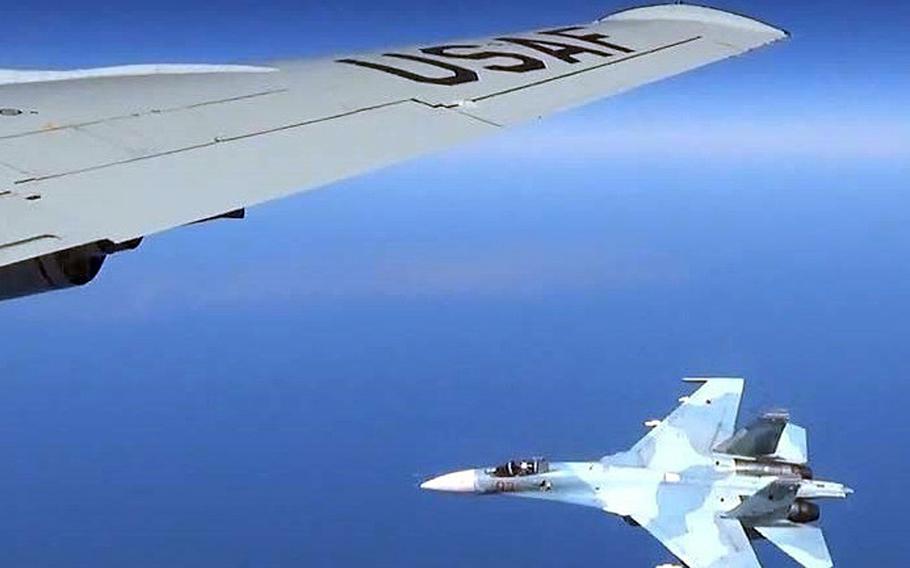
A U.S. RC-135U flying in international airspace over the Baltic Sea was intercepted by a Russian SU-27 Flanker June 19, 2017. (Courtesy U.S. European Command)
U.S. European Command released a series of photos Friday that captured the close encounter earlier this week between a Russian fighter and a U.S. Air Force surveillance plane flying over the Baltic Sea.
The photos show an armed Russian SU-27 Flanker flying in close proximity to a U.S. RC-135U, which EUCOM says was flying in international airspace.
The Monday encounter was deemed “unsafe” by EUCOM due to the Russian pilot’s “high rate of closure speed and poor control of the aircraft during the intercept.”
The incident came one day after the U.S. Navy shot down a Syrian warplane that the U.S. coalition said posed a threat to its proxy forces fighting the Islamic State group. The strike angered Moscow, which in turn threatened to target U.S. warplanes operating in Russia’s area of operation in Syria.
Adding to the tensions, a NATO F-16 was scrambled Wednesday to intercept Russian planes that the alliance said failed to respond to air traffic control.
Russian media said SU-27s were escorting the Russian defense minister to a meeting in Kaliningrad when the intercept occurred. One Russian parliamentarian described it as an act of “military rudeness.” NATO said it was following standard intercept procedures.
Despite the recent tensions, NATO said it has no planes to alter how it conducts its air policing mission over the Baltics.
“As is standard practice whenever unknown aircraft approach NATO airspace, NATO and national air forces took to the sky to monitor these flights,” a NATO official said. “Our actions were routine, and we have not changed our procedures in response to recent events.”
vandiver.john@stripes.com Twitter: @john_vandiver